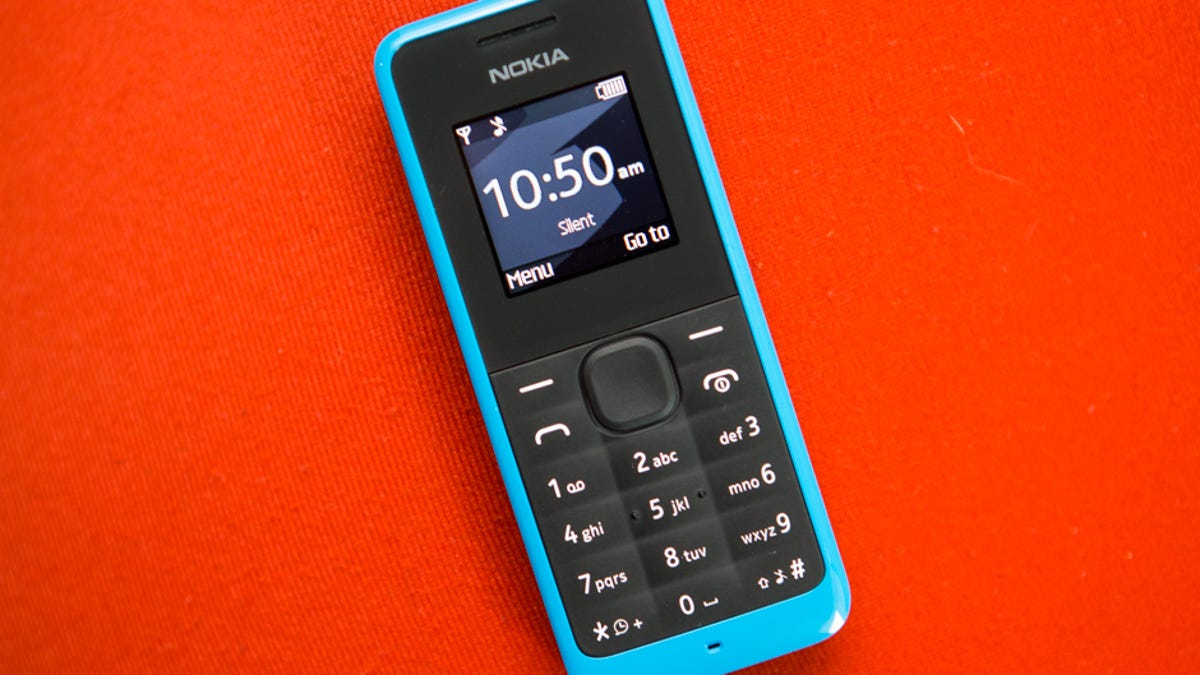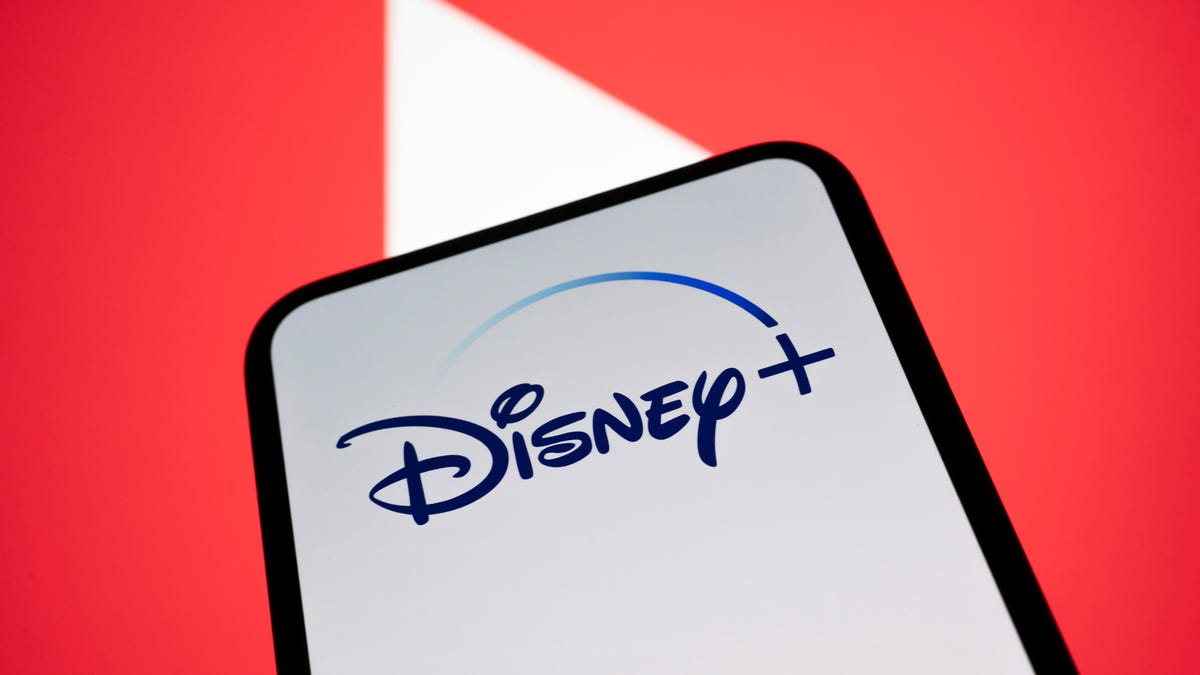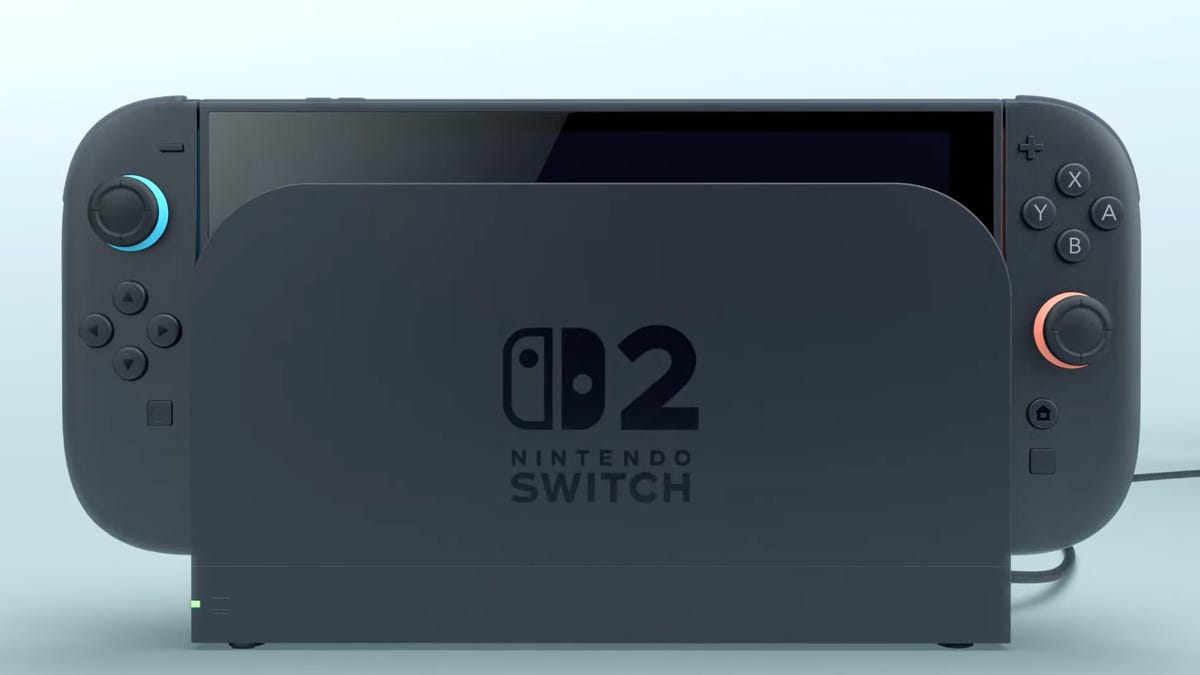Technologies
Why International Travelers Should Consider a Burner Phone Going Into the US
What’s a burner? Here’s how they work and how to get one.

If you’re an international traveler visiting the US, or you’re traveling out of the US and back in, it might be time to consider getting a «burner phone,» a device that doesn’t include all your personal correspondence.
That’s due to increasing reports that agents of US Customs and Border Patrol are scanning mobile devices and, according to some accounts, turning people away or confiscating phones based on free-speech opinions they discover. In one case, a French scientist entering the US for a conference was reportedly detained and denied entry after messages critical of the Trump administration were found on his phone. It’s unclear how widespread these phone searches are or if people are being stopped for other reasons.
Even if you’re not traveling, a burner phone can be quite handy, such as cutting down on unsolicited calls or even to avoid distractions. Busy comedian Conan O’Brien recently praised his burner as a way to not get bogged down in instant messages and notifications.
Although carriers have offered prepaid phones since the ’90s, the term burner phones or «burners» essentially became popular in the 2000s due to its use in the celebrated HBO series The Wire, in which characters used burner phones to avoid getting caught by the police. Although often portrayed as such, burners are not only meant to be used by criminals. With privacy concerns rising, you might consider using a burner phone yourself.
So, what exactly is a burner phone, and how does it work? Below, we explain everything you need to know about burners and how to get one.
What is a burner phone?
Simply put, a burner phone is a cheap prepaid phone with no commitments. It comes with a set number of prepaid call minutes, text messages, or data and is designed to be disposed of after use.
Burners are contract-free, and you can grab them off the counter. They’re called burner phones because you can «burn» them, i.e., trash them after use, and the phone cannot be traced back to you, which makes them appealing to criminals. Burner phones are typically used when you need a phone quickly, without intentions of long-term usage.
Burners are different from getting a regular, contract-bound cellphone plans that require a lot of your information to be on file.
Why should you use a burner phone?
Burner phones are an easy way to avoid pesky cellphone contracts or spam you may be getting on your primary phone number. Burners are not linked to your identity, so you can avoid getting tracked down or contacted if that’s what you need.
However, you don’t have to dispose of it after use — you can just add more minutes and continue using it. Burner phones can still function as regular phones, minus the hassle of getting a phone with a contract.
You can also get a burner phone as a secondary phone for a specific purpose, like having a spare phone number for two-factor authentication texts, for business purposes or to avoid roaming charges while traveling. You can get a burner phone for any privacy reasons you may have.
Read more: The Data Privacy Tips Digital Security Experts Wish You Knew
Burner phones, prepaid phones, smartphones and burner SIMs: What’s the difference?
Burner phones are typically cheap feature phones and usually don’t come with the bells and whistles of a smartphone. Since these are designed to be cheap and disposable, you only get the essentials and very simple designs. The flip phone is a common sight in the burner phone market.
All burner phones are prepaid phones, but not all prepaid phones are burners. What sets a burner apart is that you will not have to give away any personal information to get one, and it won’t be traceable back to you. Also, it will be cheap enough to be trashed after use.
Read more: Best Prepaid Phone of 2025
Prepaid smartphones are generally low-end models to begin with, and burners are the cheapest prepaid phones you can get. However, you can use any unlocked smartphone with prepaid SIM cards if you want to, essentially making it a prepaid phone.
If you want to get a burner, you don’t necessarily have to buy a new phone. You can get a burner SIM and use it with an existing phone as well. Burner SIMs are prepaid SIMs you can get without a contract or giving away personal information.
Where can you buy a burner phone?
Burner phones are available at all the major retail outlets. You can pick them up from Walmart, Target, Best Buy and other big retailers. They’re also often available at convenience stores like 7-Eleven and Rite Aid, local supermarkets, gas stations, and retail phone outlets like Cricket, Metro and others.
You can get a burner phone with cash; a typical burner should cost between $10 and $50. It may cost more if you get more minutes and data with the phone. If you’re getting a burner phone specifically to avoid having the phone traced back to you, it makes sense to pay with cash instead of a credit card.
If you just want a prepaid secondary phone, you can pay for one with a credit card. Credit cards will leave a paper trail that leads back to you, but that shouldn’t be an issue unless you really don’t want the burner phone linked back to you.
There are also many apps that let you get secondary phone numbers, including Google Fi and the Burner app. However, these cannot quite be called burners in the ideal sense, since these providers will typically have at least some of your personal information.
If you’re just looking to get a solid prepaid phone without anonymity, you can check out our full guide for the best prepaid phone plans available currently. We also have a guide for the best cheap phone plans you can get.
Technologies
Disney Exec Says ESPN Outage on YouTube TV May ‘Go for a Little While’
YouTube TV subscribers will miss college football on ESPN, ABC and conference networks for the third weekend straight.

More than two weeks after YouTube TV customers lost access to Disney’s streaming channels — including ABC, ESPN and the ACC and SEC networks — there is no sign of progress in the negotiations between the two entertainment giants.
At Disney’s fourth quarter earnings call on Thursday, Walt Disney CFO Hugh Johnston didn’t offer specifics on the ongoing negotiations, instead noting that «in terms of our (financial) guidance, we built a hedge into that (the YouTube TV outage), with the expectation that these discussions could go for a little while.»
Disney CEO Bob Iger ended the call on a more positive note, saying, «While we’ve been working tirelessly to close this deal and restore our channels to the platform, it’s also imperative that we make sure that we agree to a deal that reflects the value that we deliver.»
The disagreement causing the ABC and ESPN outage stems from the «carriage fee» that YouTube TV pays Disney to broadcast its channels. Disney has faced similar negotiating standoffs with other broadcasters in recent years, including an earlier 2021 outage on YouTube TV that was resolved in two days.
Don’t miss any of our unbiased tech content and lab-based reviews. Add CNET as a preferred Google source.
Disney says YouTube TV isn’t paying enough to stream its channels. YouTube TV, owned by Google, has the most subscribers among all internet TV providers, with over 9 million. Hulu, owned by Disney, is second with 4.3 million subscribers through its Hulu + Live TV offering.
«The deal that we have proposed is equal to or better than what other large distributors have already agreed to,» Iger also said Thursday.
While the two sides wrangle over the fees, they risk further losses. Nearly a quarter of YouTube TV subscribers (24%) have canceled or intend to cancel their subscription because the service «no longer delivers the core content they signed up for,» according to a survey cited by Variety.
Disney, meanwhile, is losing an estimated $30 million in revenue per week while its channels are unavailable on YouTube TV, according to a Morgan Stanley research note cited by Variety. That’s a significant chunk of change because each week Disney’s networks are dark on YouTube TV, Disney’s adjusted earnings per share drop by 2 cents, analysts say.
When will ESPN, ABC and other Disney channels return to YouTube TV?
Disney is no stranger to carriage fees feuds, and as with previous disputes, negotiations are under wraps, and how long it will continue is anyone’s guess. Disney’s contract conflict with Sling TV in 2022 lasted just two days, while the one with Spectrum/Charter in 2023 wasn’t resolved for 10 days.
Disney’s contract conflicts from previous years were mostly resolved in a week or two, but Google has considerably more bargaining power than those other platforms.
Thursday marked 14 days that Disney’s channels had been blacked out on YouTube TV — a day longer than the Disney outage on DirectTV last year. How much longer this outage will continue is unknown, but the Morgan Stanley analysts who pegged Disney’s weekly losses at $30 million sounded an optimistic note in predicting that the outage will be resolved later this week.
When a deal is reached between Disney and YouTube, the missing channels will return «in a matter of hours,» according to Variety.
What are Disney and YouTube TV saying about the dispute?
On Oct. 30, YouTube TV posted on X, «Members, when we renew our contracts with network partners, we advocate for fair pricing to offer you the best TV experience.»
«Google’s YouTube TV has chosen to deny its subscribers the content they value most by refusing to pay fair rates for our channels, including ESPN and ABC,» Disney said in a statement to CNBC.
In a memo to employees on Oct. 31 that was also reported by CNBC, Disney accused YouTube TV of deleting «previously recorded shows and events from their subscribers’ libraries.»
«YouTube TV and its owner, Google, are not interested in achieving a fair deal with us,» Disney Entertainment co-chairs Dana Walden and Alan Bergman and ESPN Chairman Jimmy Pitaro said in the memo. «Instead, they want to use their power and extraordinary resources to eliminate competition and devalue the very content that helped them build their service.»
Disney is also asking its viewers to ask YouTube TV to bring back its broadcasting via the keepmynetworks.com site.
Which Disney channels were removed from YouTube TV?
Sports fans aren’t the only viewers left sidelined by the loss of Disney channels from YouTube TV. Here are all the channels that have been removed from the streaming service:
- ABC
- ABC News Live
- ACC Network
- Baby TV Español (Spanish Plan)
- Disney Channel
- Disney Junior
- Disney XD
- ESPN
- ESPN Deportes (Spanish Plan)
- ESPNews
- ESPNU
- ESPN2
- Freeform
- FX
- FXM
- FXX
- Localish
- Nat Geo
- Nat Geo Mundo (Spanish Plan)
- Nat Geo Wild
- SEC Network
How can YouTube TV subscribers watch football games during the Disney outage?
YouTube TV subscribers with an aerial TV antenna can still watch Monday Night Football and college football games on ABC if they live close enough to receive an over-the-air broadcast signal from a local ABC affiliate.
Other than that, the only real option for viewers who want to watch all of the college football and basketball games this weekend and Monday Night Football at home is to subscribe to another service that provides ABC and ESPN, including ESPN+, Sling TV, Hulu + Live TV, Fubo or DirecTV Stream.
Sling TV offers a $5 Day Pass that could be a good option for viewers who want to watch one specific game, as well as a $10 Weekend Pass that would give you college football and basketball games for both days.
For those looking to find football games at local establishments, this handy app can help you find places that are showing the games.
YouTube TV has given $20 bill credits to subscribers
YouTube TV had promised subscribers a $20 credit for the streaming service if the Disney channels outage continued for an extended period, and on Sunday, the streaming service announced the details of that credit.
Some YouTube subscribers receive the $20 credit automatically, and others need to claim it online. According to a YouTube spokesperson, subscribers who pay with Google Play billing or through their mobile service should receive the $20 credit automatically.
If you need to claim the $20 credit, you should have received an email from YouTube TV. To redeem your the credit, follow these steps:
- Log in to YouTube.com with a web browser
- Click or tap on your profile picture
- Click or tap Settings.
- You can also directly browse to the URL at https://tv.youtube.com/settings/service_updates.
- At the bottom of the menu on the left, select Updates.
- On the following screen, which explains the Disney channels outage, click or tap the blue button marked Claim Credit.
Emails from YouTube TV started going out Sunday night and several Reddit posters have already reported receiving the $20 credit. All of the credits for YouTube TV subscribers should be issued by Wednesday, Nov. 12, according to Variety.
The $20 credit will be applied to your next billing cycle.
We asked YouTube TV if additional billing credits would be offered to subscribers if the outage continues. A spokesperson replied, «This is a situation that is evolving, and we will let subscribers know of future additional credit offers. Our main priority is to reach an agreement that restores Disney’s content to YouTube TV.»
Correction, Nov. 5: An earlier version of this story failed to note that Sling TV day and weekend passes can be used to watch local ABC affiliates only in certain markets.
Technologies
Nintendo Says Newest Switch 2 Update Didn’t Deliberately Brick Third-Party Docks
Third-party dongle docks appear to be failing after the 21.0.0 update.

Nintendo released a new Switch 2 firmware update on Tuesday that came with a few albeit not significant changes to the portable console. It appears, however, this update might have bricked some third-party docks for the console in the process.
Switch 2 owners on social media say their third-party docks are no longer working with their systems after downloading firmware update 21.0.0, as first reported by Kotaku on Thursday. It’s unclear what in the firmware may have caused the issue, but it does appear that it primarily affects dock dongles, which plug directly into the Switch instead of the typical cradle-style docks that require the console to be placed in them.
Nintendo says it doesn’t have any intention to hinder or invalidate third-party docks.
«Nintendo Switch 2 outputs audio/visuals once it detects that it is docked into a Nintendo Switch 2 Dock. Nintendo Switch does the same, outputting audio/visuals once it detects that it is docked into a Nintendo Switch Dock,» the company said in an emailed statement to CNET.
Don’t miss any of our unbiased tech content and lab-based reviews. Add CNET as a preferred Google source.
What third-party Switch 2 docks are affected?
As of now, the only docks that appear to have issues are the third-party dongle docks. Standard docks and the official dock from Nintendo are fine.
Can these Switch 2 dock dongles be fixed?
It’s unclear if another Switch firmware update can address the problem. It’s also unlikely that the manufacturers of these docks will be able to provide a firmware update to address any problems.
This is not the first time third-party docks have had compatibility issues with a Switch console. In 2018, Nintendo released the 5.0.0 update for the original Switch, which not only caused some docks to stop working, it also led to consoles using those docks having problems. A 2019 report from Wired found that some third-party docks tried to emulate the same quick connections to the USB-C port on the Switch like with the official Nintendo dock. If the hardware has a slight manufacturing defect where the connections weren’t firmly connected, it could cause the USB-C power port on the Switch to fail.
Nintendo does advise Switch owners to use official Nintendo products for the system.
What else changed in the Switch 2 firmware update 21.0.0?
The latest Switch 2 firmware update went live on Tuesday and made a series of quality-of-life changes to the Switch 2, such as changing certain text in the settings to provide a better description of their functions; adding an option to cancel multiple software downloads at once; and adding icons on software to indicate whether it’s a physical or a digital version. This last change refers to the Game-Key Card feature for certain Switch 2 games that do not have the entire game on the cartridge and require downloading the game files.
Technologies
Metroid Prime 4 for Switch 2 Delivers the Biggest Evolution the Franchise Has Seen
The next chapter in the Metroid saga lands in December with a major shift for the series. Here’s everything we know.

Metroid Prime 4: Beyond seemed like it would never come out since it was first teased in 2017, but the newest adventure featuring Samus Aran is less than a month away. Nintendo released a trailer Friday that highlights the biggest changes coming to the series.
In Metroid Prime 4, Samus responds to a distress call from the Galactic Federation, which is under attack by a bounty hunter known as Sylux. A disaster happens, transporting her to the planet Viewros, and now she has to use her new psychic powers and some help from allies to survive the planet in order to find her way home.
Metroid Prime 4: Beyond Trailer
When does Metroid Prime 4 come out?
Metroid Prime 4 will be released on Dec. 4.
What consoles will Metroid Prime 4 be released on?
Metroid Prime 4 will be available for the original Switch for $60 and on the Switch 2 for $70. For those with the original Switch now, but who think they might get a Switch 2 for the holidays, the Switch version can be upgraded to the Switch 2 version for $10.
What’s new in Metroid Prime 4?
The biggest change in Metroid Prime 4 is the open world. Previous Metroid Prime games usually confined Samus to caverns, temples or a ship, but this time around, she’ll be able to explore the world of Viewros. To help her traverse across the world, Samus can ride her bike called Vi-O-La.
Samus is known for her arsenal of powerful weapons, but in Metroid Prime 4, she will have new psychic abilities. These abilities will let her manipulate energy and activate machinery with just her mind.
Scattered across Viewros are Galactic Federation troopers, whom Samus will rescue but also fight alongside. This marks one of the few times when Samus isn’t battling alien forces on her own.
Will the Switch 2 version have any unique features?
A new feature only available with the Switch 2 version of the game is mouse controls. Players can use a Joy-Con 2 as a mouse by placing it on a hard surface, which some gamers insist is the proper way to play FPS games. If that isn’t of interest, both Metroid Prime 4 versions will make use of the Joy-Cons motion controls or a compatible gamepad, such as the Switch 2 Pro Controller.
-

 Technologies3 года ago
Technologies3 года agoTech Companies Need to Be Held Accountable for Security, Experts Say
-

 Technologies3 года ago
Technologies3 года agoBest Handheld Game Console in 2023
-

 Technologies3 года ago
Technologies3 года agoTighten Up Your VR Game With the Best Head Straps for Quest 2
-

 Technologies4 года ago
Technologies4 года agoBlack Friday 2021: The best deals on TVs, headphones, kitchenware, and more
-

 Technologies4 года ago
Technologies4 года agoVerum, Wickr and Threema: next generation secured messengers
-

 Technologies4 года ago
Technologies4 года agoGoogle to require vaccinations as Silicon Valley rethinks return-to-office policies
-

 Technologies4 года ago
Technologies4 года agoOlivia Harlan Dekker for Verum Messenger
-

 Technologies4 года ago
Technologies4 года agoiPhone 13 event: How to watch Apple’s big announcement tomorrow
